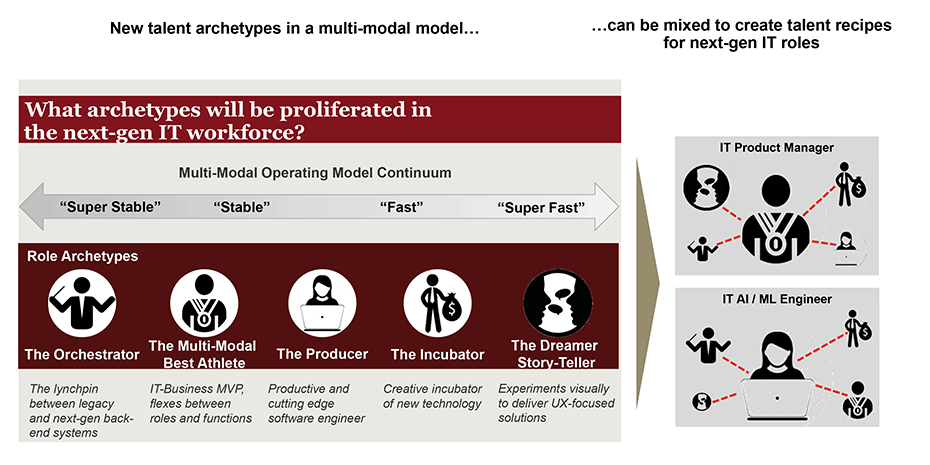The future of your company depends on next-gen IT talent
March 08, 2018
The digitization of IT and associated transformation to a smarter, faster, stronger IT operating model is dependent on a new type of IT worker. The distinctive characteristics of these workers are hard to come by, so much so that in a recent forum with several CIOs, the topic most discussed was how to attract, retain and develop the next generation technology employee. The new IT worker is an amalgamation of role archetypes, and while there are countless combinations, one thing is for certain – IT’s biggest limiting factor to successfully leveraging technology to drive and sustain growth is its “people” challenge.

The IT talent crisis
Several factors are impacting the shape of IT organizations; firstly, the increased consumerization of technology has led to a more educated and sophisticated end-user, compounded by the generational shift of decision makers within businesses, which has led to increased expectations of IT to directly drive growth and enable the delivery of the business’s differentiation strategy. Secondly, and almost paradoxically, IT organizations are still expected to support and run “business critical” legacy systems in tandem with modern digital platforms. This duality requires flexibility across the organization, which has led to the proliferation of the multi-modal operating model.
As organizations modernize, technology leadership must become adept at finding and cultivating a new group of talent capable of flourishing in this hybrid environment. Demand for this talent will continue to grow – and demand already outweighs supply. There are also shifting demographics to consider – and an incongruence between how companies approach attracting and retaining top technology talent, as well as understanding what motivates the next generation workforce.
The next-generation talent pool is characterized by a set of motivators that differ from its predecessors; monetary incentives are table stakes, while a personalized experience and work-life balance are distinguishing benefits. This cohort is highly influenced by the perception of the job – whether or not the position (and the function) is cool enough. To remain (or become) attractive, IT needs to rebrand itself as the enabler of digital superiority and growth, where innovation and creativity are nurtured and the ability to experiment and drive change are championed.
The next-gen IT workforce
As more organizations adopt a multi-modal operating model, they will need to quickly find a new mix of talent to fill in their capabilities gaps. Strategy& has identified 5 role archetypes that will proliferate in the next-generation IT workforce. Different roles will have elements of multiple archetypes, to differing degrees. As an organization is mapping out new positions, it can look to these archetypes to embody the requisite skillset and influence hiring, retention, and development plans.

In summary, as companies across all industries demand more of their IT organizations to develop and sustain their differentiation strategies to meet increased customer expectations, it is apparent that talent is the key bottleneck to success. One of the most common themes we hear when we interview senior business stakeholders on IT transformations is that IT needs to be more business savvy, take more risks, and drive change proactively through innovation and new technologies. Leveraging technology, or introducing streamlined processes is part of the solution, but the long term survival and evolution of IT organizations is contingent upon filling in gaps in the workforce through roles that blend several archetypes – the Orchestrator, the MMBA, the Producer, the Incubator, and the Dreamer-Story Teller. In the end, the competition to find the right blend of next-generation IT talent will be decided by how companies are able to tailor an approach to attracting talent that addresses the unique needs of today’s generation from the start.
Contact us





